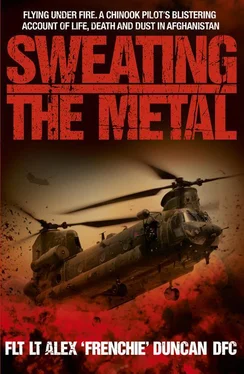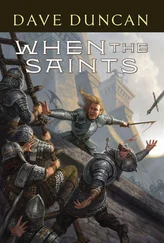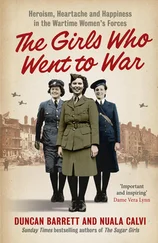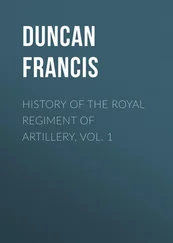So we flew on in tactical formation with the Apache, call sign Ugly Five Zero; our mission, to deliver some troops from the JHSU (Joint Helicopter Support Unit) to assess what the options were for recovering the Pinzgauer. We were flying well above the threat from small arms fire (SAFIRE), but there are other threats, and the Apache was picking up a lot of what we call ICOM chatter – basically, radio traffic between Taliban groups. The radio intercepts told us that the Taliban were moving into position and were about two klicks away; they’d been seen with weapons and heard saying that they wanted to have a go at the aircraft.
Nichol was the handling pilot. For me, it was my first experience of being under direct threat and it wasn’t a nice feeling. Knowing that there are some demented, well-armed fuckers on the ground who want to shoot you out of the sky – and that they’re close by – is not something you’d wish on your worst enemy. Well actually, given that the Taliban are my worst enemy, maybe I would.
The mission just didn’t make sense to me. Why question the wisdom in scrambling us to rescue wounded troops because of the threat to the aircraft and crew, yet send us into the jaws of death to rescue a £40,000 vehicle that had already been ‘cleaned’ by the crew that abandoned it? All the doors and windows had gone, so it was little more than a chassis with six wheels, a back end and a steering wheel. Why go into the hover to try and pick up a worthless vehicle when there was a better than even chance we’d be taking fire, risking the four of us and our £15,000,000 cab? It was madness.
The ICOM chatter was increasing, the sun had dipped below the horizon, and we knew that if we didn’t pick the vehicle up, it would only pass the problem on to someone else. Bastion was telling us that if we didn’t do the job, they’d have to send in reinforcements to spend the night guarding the vehicle. What to do? Do we let twenty-four poor sods spend the night outside waiting for an attack, or do we go in and do it as ordered?
Nichol made the call: ‘We’re going to do this. I’m going to do a zero speed approach right next to the truck; we’ll throw a strop out to the Joint Helicopter Support Squadron guys, it’ll take them a few seconds to attach it to the hook and then we can lift.’
I was gripped with fear; convinced that we’d be sat there in the hover and some Taliban fighter would come out of the bushes and release an RPG straight through the arse of the aircraft. I had no frame of reference for this, so my mind played all sorts of tricks on me, none of which were remotely useful. It’s fight or flight, but what do you do when every cell of your being is telling you ‘flight’, yet running isn’t an option? You get on with it.
Nichol did an absolutely beautiful landing; absolutely fucking nailed it, putting the aircraft right next to the Pinzgauer. The crewman already had the floor hatch open with the hook ready. He chucked the strop under the aircraft, the JHSU ran out, secured the truck, and as soon as they were back in he raised the ramp. No fucking around. As soon as the guys were back on board, Nichol pulled power and did a beautifully smooth straight up and right. It was a beautiful bit of flying, no corrections required.
I’ve no idea how but we got away with it. I think it was down to how quickly it all happened and the fact that it was done so well. The enemy simply didn’t have time to get into position. We were all the way there and halfway back by the time they arrived. I was hanging out of my arse when we shut the cab down back at Bastion, but I’d turned a corner and learned something. The threat was becoming more real and I knew it was only a matter of time before we took fire. It’s a cliché, but I knew we’d have to keep being lucky, whereas the Taliban only needed to be lucky once.
It was around this time that the Taliban intensified their attacks on the towns of Now Zad and Musa Qala, and it was being reported that Now Zad in particular was about to fall. The governor of Helmand province, Mohammad Daoud, urged Brigadier Ed Butler, the commander of 16 Air Assault Brigade, to defend government positions in both places.
Butler was reluctant to do so because Lt Col Tootal’s 3 Para were already overstretched, and it was tactically unsound to see the small force that he had available being tied down to two fixed positions in remote outstations. Daoud threatened to resign over the issue, which would have caused the UK government – who had pressed for his appointment in the first place – some embarrassment. Butler was in an impossible position; in the end, he had to relent, dispatching B Company, 3 Para to protect Now Zad and a small force to Musa Qala. We were starting to feel the pinch as both 3 Para and the Chinook Force had finite resources available. There were a total of just six Chinooks available in theatre, so helicopter hours were scarce, and 3 Para were dangerously overstretched.
We’d been engaged to support their move into the newly established Platoon Houses and were flying supplies in, using underslung loads. We were flying as a four-ship: two Chinooks – Splinter Two Five (Nichol and I) and Splinter Two Six; and two Apaches to support us – Ugly Five Zero and Ugly Five One.
We were increasingly glad of the Apaches that accompanied us on every mission. The Apache helicopter is a revolutionary development in the history of war. It is essentially a flying tank – a helicopter designed to survive heavy attack and inflict massive damage. It can zero in on specific targets, day or night, even in terrible weather. It’s a terrifying machine to the Taliban, who call it ‘The Mosquito’, and for whom it vies with the Chinook as the aircraft that they would most like to shoot down.
The Apache’s main function in battle is to close with the enemy and kill them, and it’s a particularly personal form of killing for the pilots who, along with snipers, are the only two combatants to get a detailed look at the faces of the men they are about to kill. A sniper fixes his quarry in the crosshairs of the sight on his bolt-action rifle; the Apache crew watch theirs in close-up on a five-inch square screen in the cockpit before they pull the trigger. The main fixed armament is a 30mm M230 Chain Gun under the aircraft’s nose. It can also carry a mixture of AGM-114 Hellfire missiles, and Hydra 70 rocket pods on four hard points mounted on its stub-wing pylons.
One of its most impressive features is the helmet mounted display (HMD), which has a clip-on arm that drops a monocle-like screen in front of the pilot’s right eye. Instrument readings from around the cockpit are projected on to it and, at the flick of a button, a range of other images can also be superimposed underneath the glow of the instrument symbology, replicating the Apache’s camera images and the radar’s targets.
The monocle leaves the pilot’s left eye free to scan the world outside the cockpit. The HMD has one other major advantage: at the flick of a switch, it enables the Apache’s weapons systems to slave to either pilot’s line of sight. In each corner of the cockpit, sensors detect exactly where the right eye is looking and lock the weapons systems to the pilot’s eye-line. At the HMD’s centre is a crosshair sight, and as the pilot’s eye moves, so too, for example, does the Apache’s 30mm cannon, which swivels to point wherever the pilot is looking. Look at the target, pull the trigger and that’s where the rounds will land. If the Chinooks represented Cold War technology at its best, the AHs were the latest word in cutting edge.

A few hundred metres south of the DC at Now Zad was a small hillock with commanding views over the town, which had previously been manned by the Afghan National Police. It was known by everyone as ANP Hill and we had to drop off some pax there. First though, we had to drop an underslung load at the Patrol House in the DC. It’s a sortie I’ll never forget because I witnessed an incident at ANP Hill that really opened my eyes to one of the uglier elements of Afghan culture.
Читать дальше













